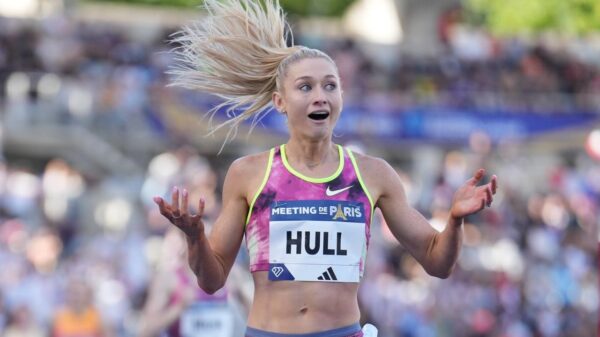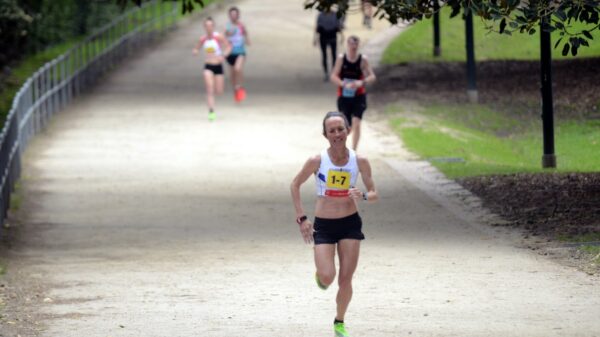Let’s face it, keeping everyone happy in high-stakes competition is a fool’s errand. But that doesn’t mean mass uncertainty should reign. For athletics selection, the current system in Australia, based purely on selector discretion, needs to change.
Across the Pacific, things are clear-cut. Want to be an Olympian in the USA? Finish in top three at the Trials who have met World Athletics qualifying rules. Simple. No ifs, ands, or social media meltdowns. It’s befitting to American culture and their depth of talent.
Here in Australia, it’s a different story. We have the “discretionary approach,” where Athletics Australia selectors call the shots based on a variety of factors, some clear, some…well, vague unless you are in the room where it happens. There are pros and cons, of course. The US system is rigid, but certain. Ours is flexible, but leaves athletes guessing. Surely there’s a happy medium?
This isn’t just theoretical. The recent women’s marathon selection was a public spectacle, and similar drama could unfold in July for track and field events like the 800m and 1500m. Here’s the (slightly abridged) lowdown:
- Six Aussie marathoners qualified, but only three spots were available.
- Sinead Diver, Genevieve Gregson, and Jessica Stenson were reportedly selected.
- Lisa Weightman appealed, sparking a media frenzy after some, shall we say, “unsportsmanlike” social media behaviour from her husband targeting Stenson.
- Olympic legend Sally Pearson weighed in, adding fuel to the fire. Talk of appeals flew, legal battles loomed, then…fizzled.
- Weightman won’t take the matter further and Diver, Gregson and Stenson are set to be selected.
All that drama in the home straight for a qualifying period that stretched like a marathon itself (December 2022 to May 2024)! When the dust has settled, the underlying issue will remain: all discretion invites uncertainty and absolute discretion invites complete uncertainty.
Athletes are laser-focused. Tell them to jump through a hoop, they’ll ask “how high?” But a system where the hoop is imaginary until a group of people decide where it was, well that’s rightly perplexing and misaligned to the outlook of athletes.
Athletes are laser-focused. Tell them to jump through a hoop, they’ll ask “how high?” But a system where the hoop is imaginary until a group of people decide where it was, well that’s rightly perplexing and misaligned to the outlook of athletes. That’s a recipe for confusion and, frankly, disappointment and disengagement.
Selection panels also change in composition over time – they are not courts that set binding precedents – different selectors may approach different decisions in different ways over time.
So, what motivates selection in this “discretionary” world? Officially, it’s all about medal potential or cracking the top eight. That’s fair enough. Additionally, AA has recently favoured sending full-sized teams to major championships. This shift from past, exclusionary policies aims to boost opportunities and the sport’s image – a good thing, considering the lingering mistrust from past selection fiascos.
One factor not explicitly mentioned as a factor for marathon selection, but which could play a role in upcoming track and field selections, is domestic competition. Here’s where things get interesting. Unlike the past with dedicated trials and automatic selection, the recent National Championships only served as an eligibility hurdle, and provided the selectors a milestone to use some of their discretion, in a constrained way.
There’s undeniable value in having top athletes compete domestically – for commercial reasons, athlete development, and overall sport profile. Maybe it’s time to strengthen these factors within selection criteria, moving away from the current “watered-down” version. Maybe it needs consideration for the marathon too.
But let’s not forget the athletes themselves, as people, often lost in the selection shuffle. The recent drama put immense stress on all four contenders. Is that really the best way to prepare for an elite event just two months away? Is it the best way to support the wellbeing of people devoting themselves to representing the nation? There has to be a better way.
Discretion has its place, but absolute power for selectors creates problems. Look at Japan as an alternative, without discretion, that limits some of the risk of a single USA trial model. Japan’s approach involves a selection race – top two get automatic spots, with a provisional third. This third spot can be snatched by anyone running a faster qualifying time later. Two chances to prove yourself, no room for selector-induced squabbles. But still some potential that a preferred athlete might miss out, if they fail or a sick/injured twice.
Australia hasn’t had dedicated marathon trials in ages (the last one being in 2000, where one position was up for grabs. Prior to that it was 1980 before there was a women’s marathon at the Olympics and when few of the athletes vying for selection were even born). Picking the “fastest three” isn’t perfect either, considering course variations, unpredictable racing schedules, and the event’s infrequency. But here’s an idea for a hybrid system that could work across all events, giving 67% more certainty while retaining 33% of the discretion:
67% Certainty, 33% Discretion:
- Two automatic selections, so long as World Athletics qualifying by standard or quota is met:
- Winner of the Australian Championships (or trial race – that could even be the prior year’s major such as the World Championships)
- Athlete with the best performance on the Top Lists during the qualifying period (second-best on the list if the champion is faster, higher, stronger here too)
- One remaining spot (assuming World Athletics qualifying met) goes to selectors’ discretion. This, however, should be reserved for truly exceptional circumstances (which maybe Stenson’s is, with her qualifying performance coming only 7 months after giving birth) but with clearer criteria and weighting given to the likes of head-to-head record, qualifying performance and PBs, world rankings etc.
This multi-stage approach provides more predictability for athletes while allowing some flexibility for selectors. It would also likely be easier for those who have disappointing news to be less disenchanted.
Or are we happy with the status quo of the sport dragging itself through the mud continually?








